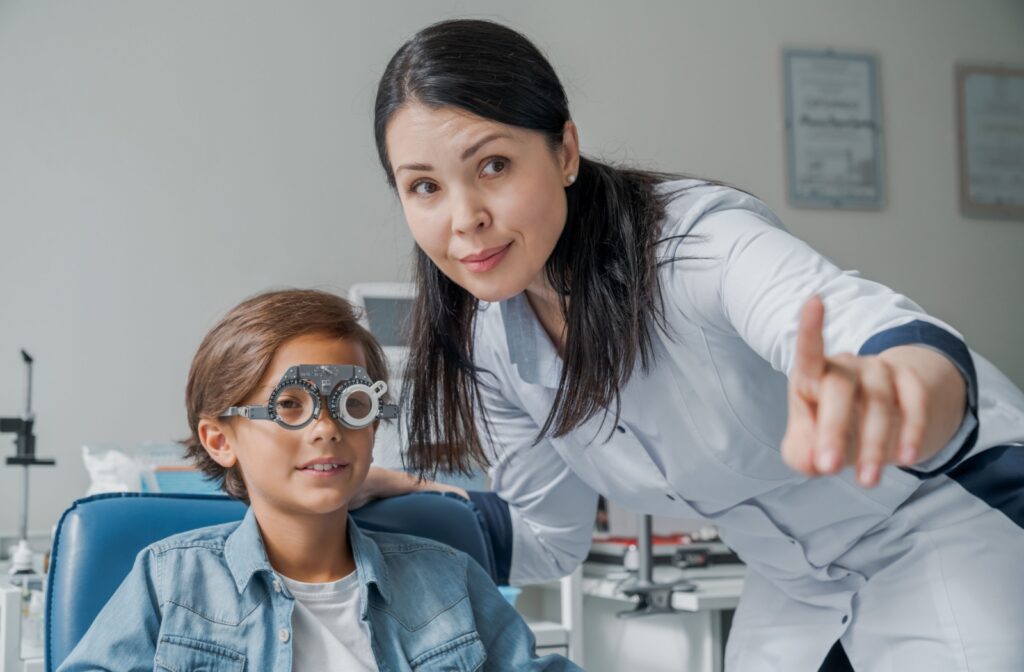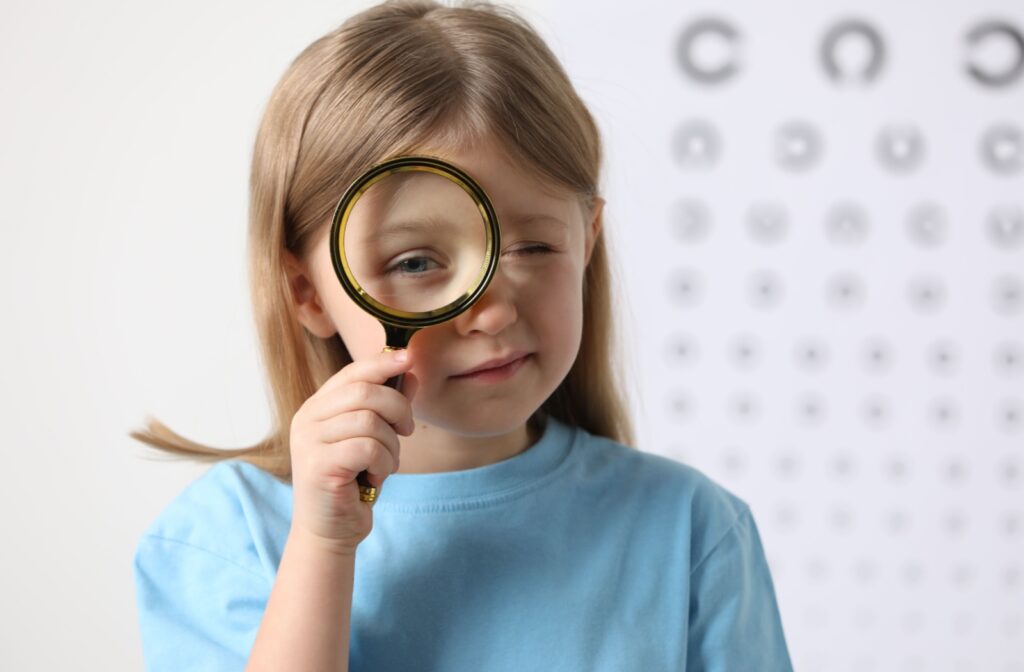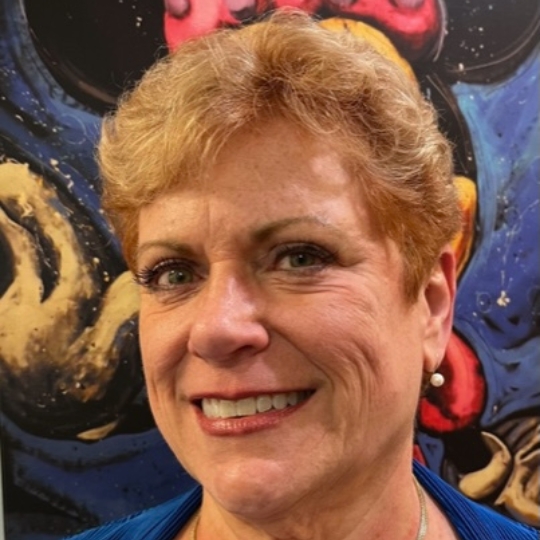Myopia, or nearsightedness, is one of the most common vision conditions in children and adolescents today. While myopia usually stabilizes in early adulthood, that doesn’t mean it can’t continue to worsen with age. For many people, a myopia diagnosis in childhood sets the stage for a lifetime of vision management, and without the right care, it can progress into more serious vision concerns.
In this post, we’ll explore how myopia progresses, what influences that progression, and how you can help protect your child’s vision long-term.
What Is Myopia?
Myopia is a refractive error that makes distant objects appear blurry while nearby objects stay clear. This happens when the eyeball is too long or the cornea is too curved, causing light to focus in front of the retina instead of directly on it.
Common Symptoms of Myopia
- Blurry distance vision
- Squinting
- Frequent headaches or eye strain
- Difficulty seeing at night
- Trouble concentrating in school
- Holding books or devices very close to the face
Because many of these symptoms can affect a child’s learning and overall well-being, early detection and treatment are key.
What Causes Myopia?
Myopia doesn’t have a single cause. Instead, it develops due to a combination of genetic, environmental, and lifestyle factors.
Genetics
Children are more likely to develop myopia if one or both parents are nearsighted. Research shows that several genes play a role in determining eye shape and growth patterns.
Environment
Spending long hours on close-up tasks like reading, gaming, or using digital devices increases the risk of developing myopia. Limited outdoor time is another major contributor, as exposure to natural light and focusing on distant objects are essential for healthy eye development.
Lifestyle
Modern routines often involve heavy screen use, poor posture, and little time outdoors. These habits can place additional strain on young eyes and may accelerate myopia progression.
What Causes Myopia Progression?
In most cases, myopia develops during childhood and worsens through the teenage years, then levels off in early adulthood. However, for some adults—especially those who continue doing a lot of close-up work or who develop other eye conditions—myopia can continue to progress.
Factors that can influence worsening myopia in adulthood include:
- Excessive screen time
- Long hours of reading or desk work
- Poor lighting conditions
- Underlying health issues that affect the eyes
Age alone isn’t always the culprit—it’s often how the eyes are used over time that makes the difference.

The Importance of Myopia Control
Controlling myopia early offers significant benefits, especially for children. Aside from reducing the need for stronger prescriptions year after year, myopia control helps protect long-term eye health.
Why It Matters
If left unmanaged, myopia can develop into high myopia—a more severe form that increases the risk of serious complications such as:
- Retinal detachment
- Macular degeneration
- Glaucoma
- Cataracts
These conditions can threaten vision permanently. That’s why slowing myopia progression early is so important.
Myopia Control Options
Fortunately, there are several safe, effective methods to help manage myopia in children. Your child’s eye doctor can recommend a plan tailored to their specific needs.
Atropine Eye Drops
Low-dose atropine eye drops have been clinically shown to slow myopia progression. They’re usually applied nightly and are often well-tolerated by children.
Orthokeratology (Ortho-K)
Ortho-k uses custom-fitted contact lenses worn overnight to gently reshape the cornea. This temporarily corrects vision during the day and can slow the progression of myopia.
Multifocal Contact Lenses
These specialized lenses offer different focus zones to reduce the eye’s tendency to elongate. They’re a good option for active kids who may prefer contacts over glasses.
Lifestyle Adjustments
Small changes can make a big difference. Encourage your child to:
- Spend more time outdoors (aim for at least 1–2 hours a day)
- Follow the 20-20-20 rule during screen time (every 20 minutes, look at something 20 feet away for 20 seconds)
- Take regular breaks from close-up work
- Use good lighting when reading or doing homework
Preventing Further Myopia Progression
While you can’t change your child’s genes, you can help guide their daily habits to support healthy vision. Routine eye exams are especially important—many kids don’t realize their vision is worsening until it begins affecting school or sports.
Tips for prevention and early detection:
- Schedule annual eye exams (or more frequently if recommended).
- Pay attention to signs of visual discomfort or squinting.
- Limit screen time and encourage time outdoors.
- Create a reading-friendly environment with good lighting and posture support.
When to See an Eye Doctor
If your child is showing signs of myopia or already wears corrective lenses and seems to be outgrowing them quickly, it’s time for a professional evaluation. Early intervention is the most effective way to manage progression and prevent long-term complications. At Vision Care Grayslake, we specialize in pediatric eye care and offer personalized myopia control solutions to support your child’s long-term vision. If you’re concerned about your child’s eyesight or want to learn more about myopia control, request an appointment with our team today.




